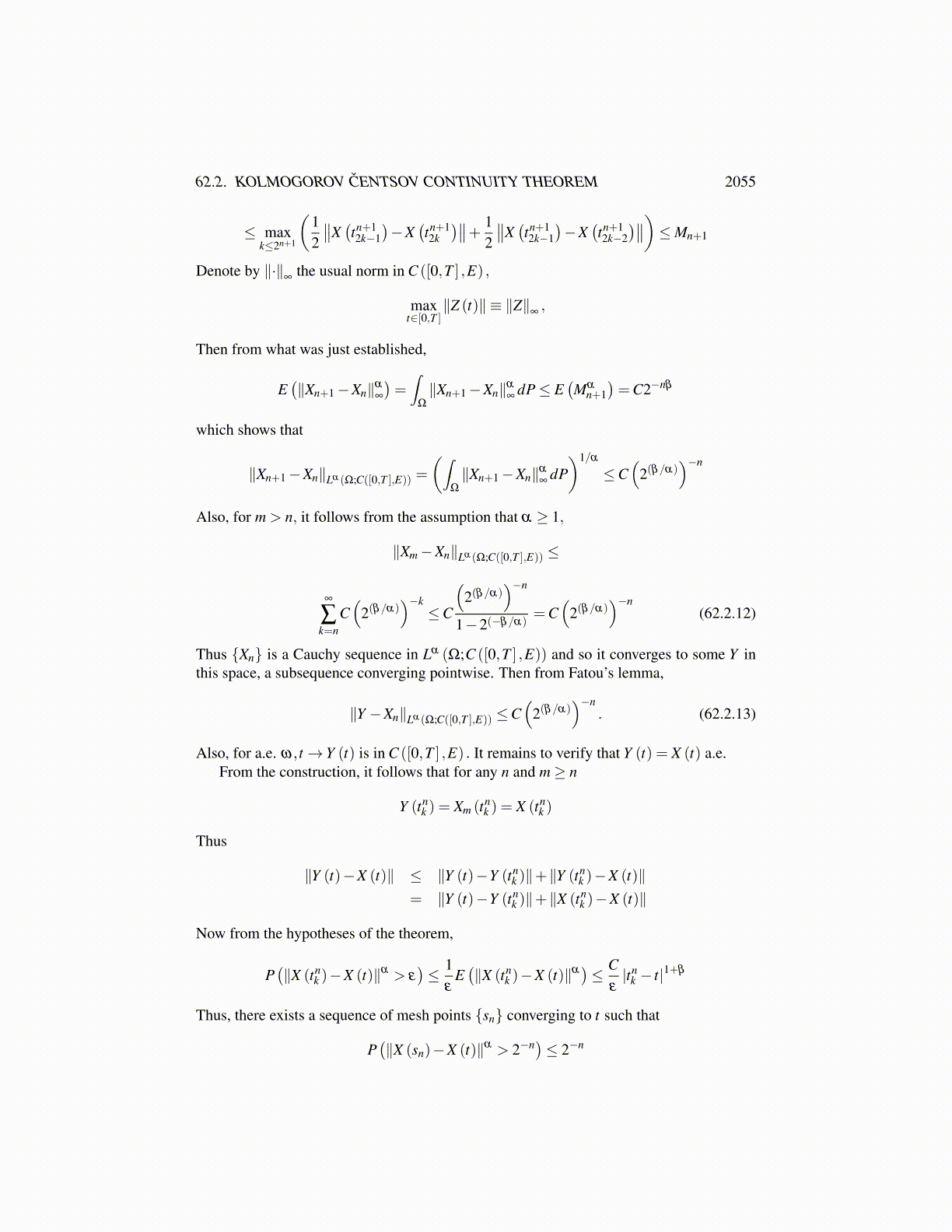
62.2. KOLMOGOROV ČENTSOV CONTINUITY THEOREM 2055
Therefore,
P([||Y (t)−X (t)||> 0])
= P(∪∞
k=1
[||Y (t)−X (t)||> 1
k
])≤
∞
∑k=1
P([||Y (t)−X (t)||> 1
k
])= 0.
A few observations are interesting. In the proof, the following inequality was obtained.∣∣∣∣X (d′)(ω)−X (d)(ω)∣∣∣∣ ≤ 2
T γ (1−2−γ)
(T 2−(n+1)
)γ
≤ 2T γ (1−2−γ)
(∣∣d−d′∣∣)γ
which was so for any d′,d ∈ D with |d′−d| < T 2−(M(ω)+1). Thus the Holder continuousversion of X will satisfy
||Y (t)(ω)−Y (s)(ω)|| ≤ 2T γ (1−2−γ)
(|t− s|)γ
provided |t− s|< T 2−(M(ω)+1). Does this translate into an inequality of the form
||Y (t)(ω)−Y (s)(ω)|| ≤ 2T γ (1−2−γ)
(|t− s|)γ
for any pair of points t,s ∈ [0,T ]? It seems it does not for any γ < 1 although it does yield
||Y (t)(ω)−Y (s)(ω)|| ≤C (|t− s|)γ
where C depends on the number of intervals having length less than T 2−(M(ω)+1) whichit takes to cover [0,T ] . First note that if γ > 1, then the Holder continuity will imply t →Y (t)(ω) is a constant. Therefore, the only case of interest is γ < 1. Let s, t be any pair ofpoints and let s = x0 < · · ·< xn = t where |xi− xi−1|< T 2−(M(ω)+1). Then
||Y (t)(ω)−Y (s)(ω)|| ≤n
∑i=1||Y (xi)(ω)−Y (xi−1)(ω)||
≤ 2T γ (1−2−γ)
n
∑i=1
(|xi− xi−1|)γ (62.2.9)
How does this compare to (n
∑i=1|xi− xi−1|
)γ
= |t− s|γ ?
This last expression is smaller than the right side of 62.2.9 for any γ < 1. Thus for γ < 1,the constant in the conclusion of the theorem depends on both T and ω /∈ N.
In the case where α ≥ 1, here is another proof of this theorem. It is based on the one inthe book by Stroock [121].